First Impressions: Honor 20 Review
First Impressions: Honor 20
The Honor 20 does well to retain much of the Pro experience in a cheaper package
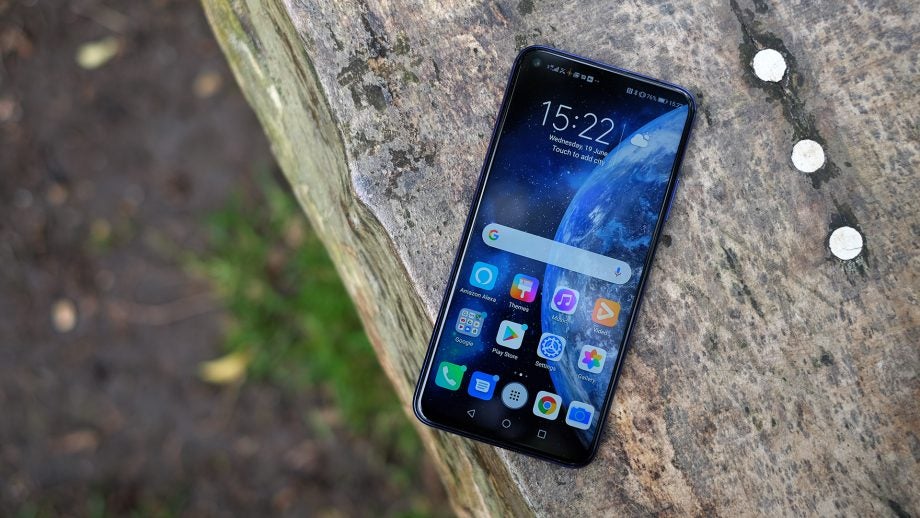
First Impressions
You probably shouldn't buy the Honor 20 right now. It looks and feels great. It’s powerful. And while the camera array may seem better on paper than it is in person, it’s still great. If it were not for the “political” situation Huawei and Honor are currently in, the Honor 20 would be easy to recommend. It’s great value and a highly likeable phone, as long as you are not someone who insists the custom software from Honor and Huawei is still terrible.
Key Specifications
- Review Price: £399.99
- 6.26-inch Full HD+ IPS LCD
- 32MP front hole punch camera
- Quad rear camera setup
- 48MP main, 16MP ultra-wide, 2MP depth, 2MP macro
- Kirin 980 processor
- 6GB RAM/128GB storage
- 3750mAh battery
What is the Honor 20?
The Honor 20 is a £400 phone that can step up to some that cost £600-800, and it doesn’t look out of place.
It’s also the cheaper alternative to the Honor 20 Pro, at around £100-200 less. As a result, you lose a “real” zoom camera, the glass on the back isn’t as curvy, the battery is a little smaller, and it has half the storage – but 128GB of space is not to be sniffed at.
The Honor 20 would be one of the most appealing phones at the price if it were not for the ongoing issues surrounding Honor and Huawei. Google has cut ties with Huawei. And as Huawei is Honor’s parent company, so this phone may not get updates and may even lose access to critical Google services. Until the situation becomes clearer we’re leaving the scores of new reviews for Huawei and Honor phones – we’ll keep updating this when we more information becomes available. Honor has said this phone will be upgraded to Android Q, so there’s some good news.
Related: Amazon Prime Day 2019
That said, the latest reports suggest it will get an upgrade to Android Q. Things are looking up. Using the Honor 20 has been a lot of fun. But to buy one now still seems risky.
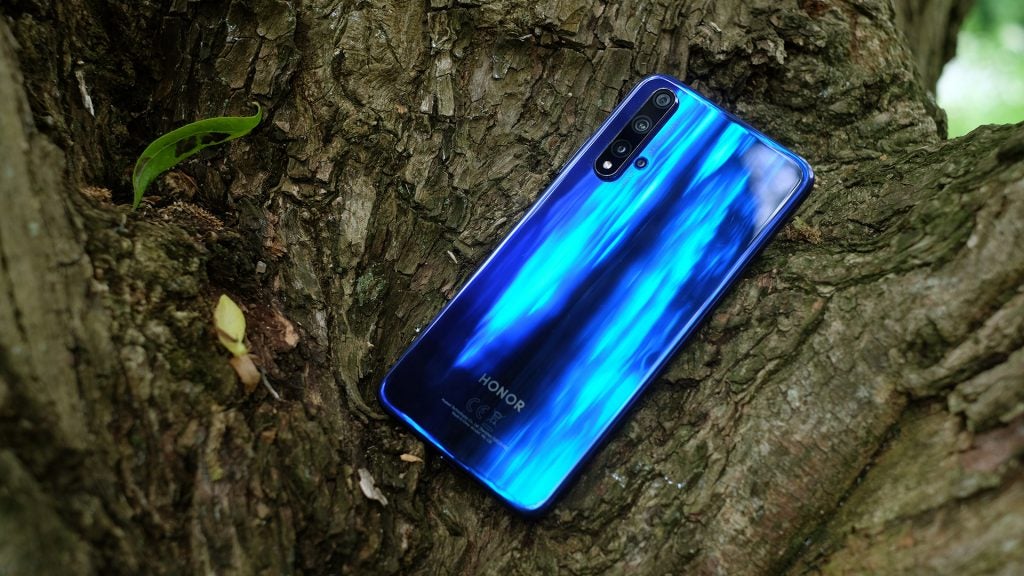
Honor 20 — Design
The Honor 20 is a classic glass and metal sandwich. But there is one clue this is not an £800 phone. There’s some filler in this sandwich. A couple of little bands of plastic sit to each side of the metal middle, acting as an impact buffer between the harder glass and metal.
Does it matter? Nope. However, the Honor 20 does feel slightly less expensive than the Honor 20 Pro because this glass back is flat apart from a tiny little “2.5D” curve at the edges. The Pro model has a true curved glass rear.
Its rear otherwise looks great. There’s a certain depth to the finish, thanks to a light reactive layer below the surface. It creates brighter glints in the blue finish. Honor also makes a black version of the 20, which has a slightly lower-key look.
Related: Huawei Google Ban
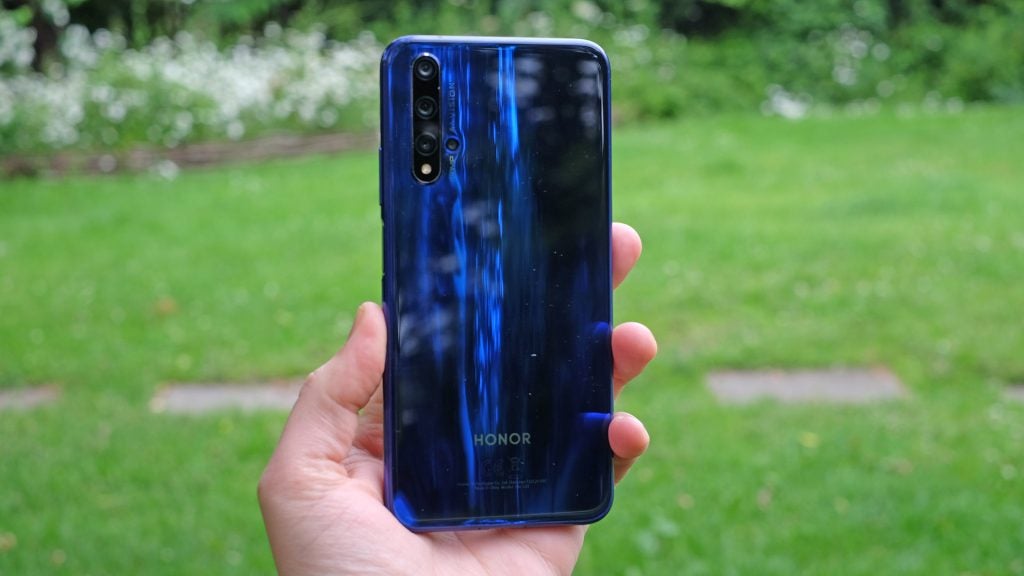
The punch hole display is another sign this is a “new” phone. Some companies may have moved onto motorised front cameras, leaving the screen hole-free, but punch holes have not been around that long either.
The Honor 20 strikes a great balance between screen size and accessibility. This isn’t a monster-size phone. It won’t poke out of normal pockets as if it wants to live in the open air.
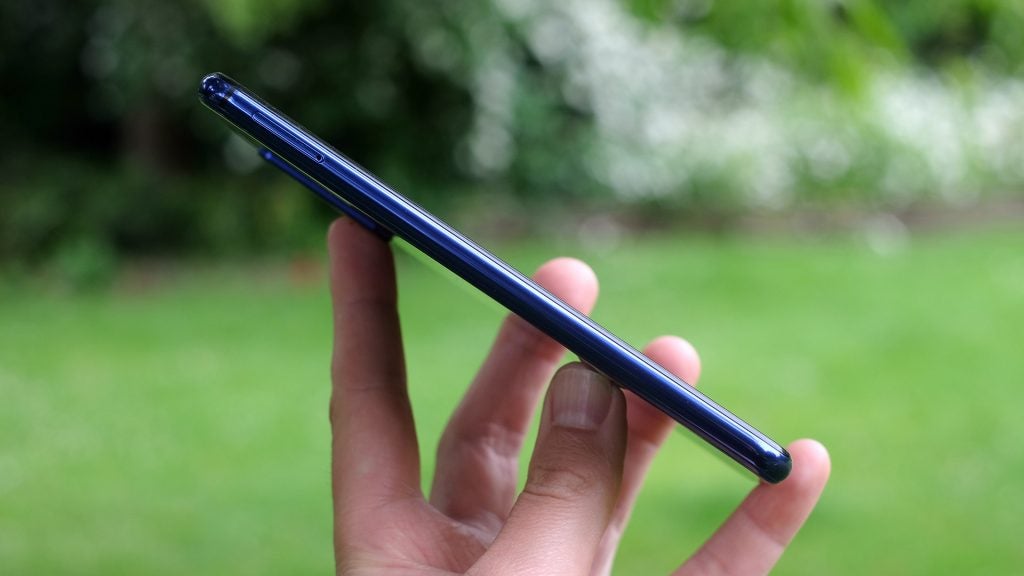
There’s one negative to the Honor 20’s design. Its camera housing sticks out by a millimetre or so and its metal border is far too sharp. At one point I had the Honor 20 and OnePlus 7 Pro 5G in the same pocket. They didn’t get on well: the OnePlus ended up with several scratches in its glass finish.
I’d recommend using a case. This particular phone did not come with one, but yours might.
Other hardware features? The Honor 20 has a side fingerprint scanner, rather than the company’s usual rear one. Its ergonomics, speed and reliability are brilliant. It feels fantastic, one of the best side scanners I’ve used to date.
It doesn’t support gestures, such as bringing down the notifications bar with a swipe, but the basics are more than solid.
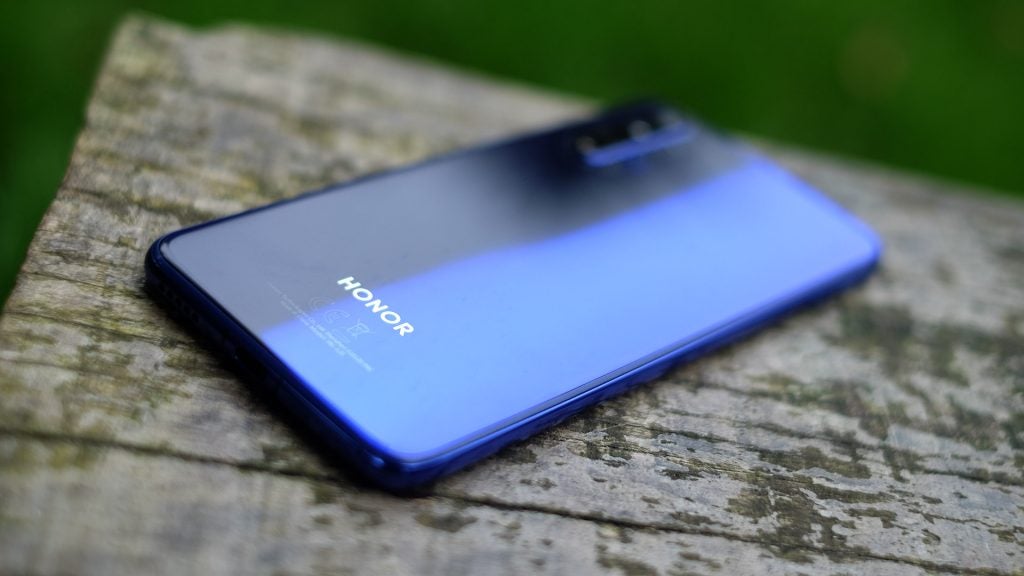
There’s also what looks like an IR blaster on the top, which lets a phone act like a universal remote. However, download an app that lets you do so and it claims the Honor 20 doesn’t have IR blaster hardware. It’s a shame.
You also miss out on a headphone jack. The Honor 20 comes with an adapter in the box, but I’d prefer an old-fashioned 3.5mm socket.
It has just the one bottom-loaded speaker too, the standard at this price. Sound quality is fair, but it could do with a little more volume. It only just passes the “can I hear my podcast while in the shower” test, and that is when backed up against a wall to boost the output.
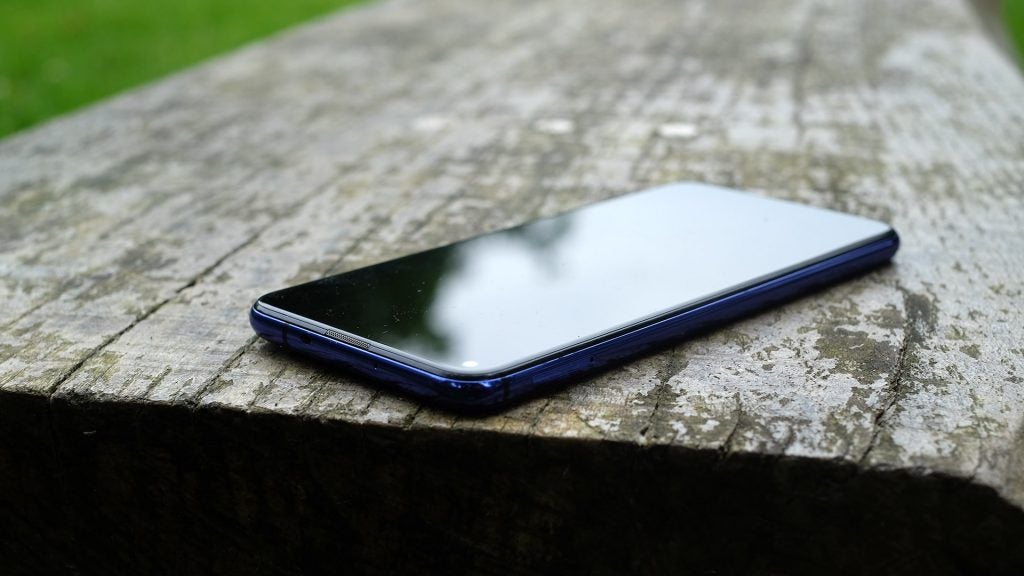
Honor 20 — Screen
The Honor 20 has a mid-size screen with mid-level tech. It measures 6.26 inches across, matching the Honor 20 Pro.
You are bound to notice one of its strongest elements first. The Honor 20 may not have infinitesimally small micro-borders, but the camera punch hole lets it fill out almost the entire front. It makes the Google Pixel 3A XL look old fashioned.
Most of the raw elements of image quality are good too. The Honor 20 has two colour modes, Normal and Vivid. They cater for eyeballs that prefer hyped and more natural colours well, and the calibration looks tasteful to my own eyes.
This is an LCD screen, so you may notice some raised blacks if you watch a very dark scene in a very dark room. But I’ve found that even the black level looks more-or-less perfect with most content.
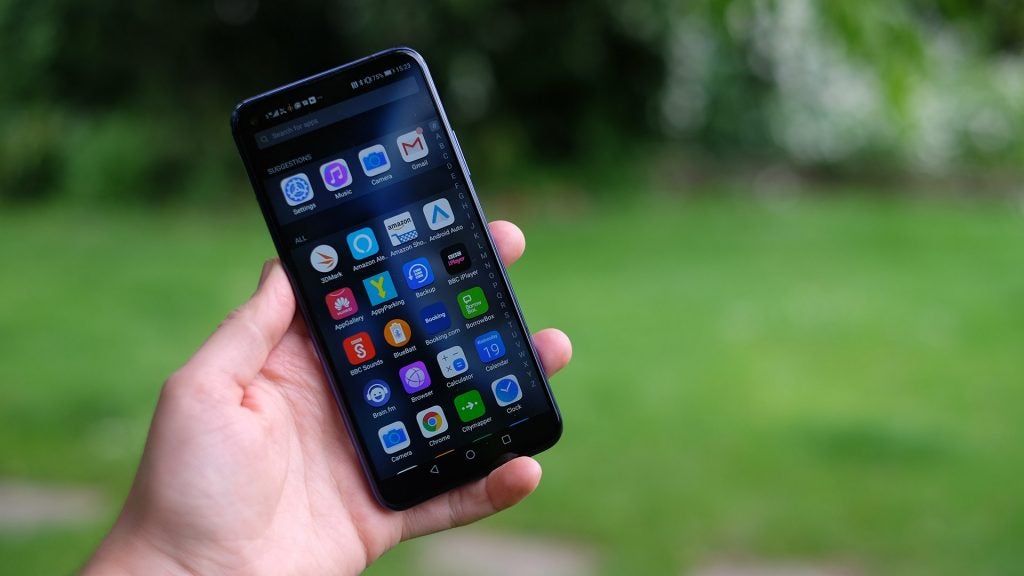
Brightness and viewing angles are the only (semi) obvious weaknesses. I can see what’s on the Honor 20’s display outdoors, but I wouldn’t want to watch a movie in the park on this phone. There’s also quite a significant brightness drop off at an angle. I noticed this when taking the photos of the phone you see here.
You can barely see the screen contents from an oblique angle (again, this is outdoors). In this regard the Honor 20 performs at about the level I’d expect for a mid-range phone that tries to dazzle us with extra tech. There’s always a little compromise somewhere.
Honor 20 — Software
The Honor 20 software raises eyebrows, but not for the reason you might guess. It runs Android 9 and has Magic UI 2.1, which is effectively the same as the EMUI used in Huawei phones.
At present it’s good. The Honor 20 runs smoothly, and while there are characteristic little issues like the lack of an apps menu and a visual style some won’t like, Magic UI overs plenty of customisation.
The outlook is the problem. Huawei has been “blacklisted” by the US government, and Google has “cut ties” with the company. Honor may seem like a completely different entity, but it isn’t. Sanctions that affect Huawei will also affect Honor.
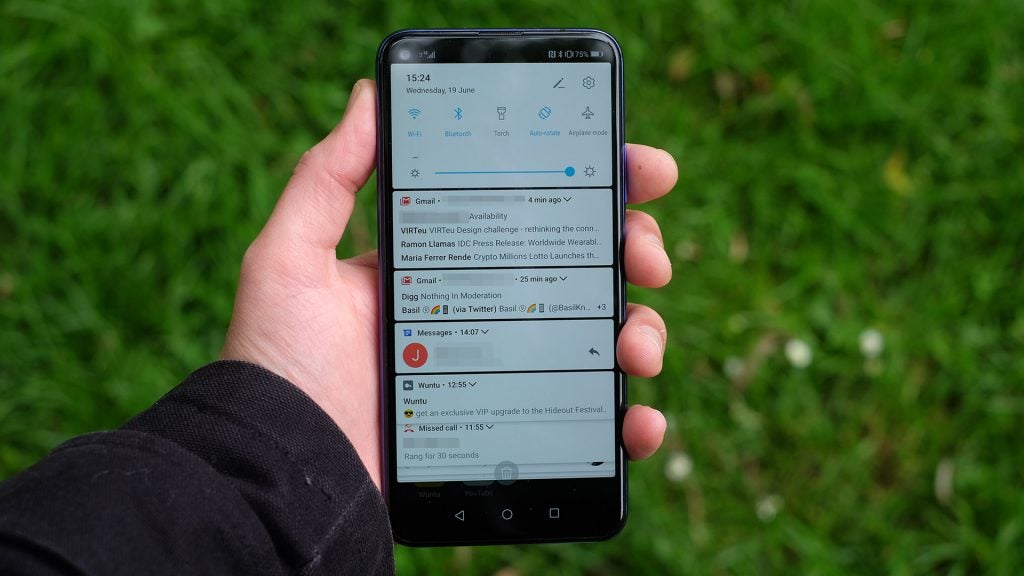
Right now we don’t know if the Honor 20 will get Android updates (reports suggest it may get Android Q), or even those to core Google services like Maps, Google Play and Mail. This is a huge issue, one that makes us wonder if the phone will even work properly in a year’s time.
The hope for Honor 20 buyers is that this issue will somehow resolve itself, or that Honor will replace it with an alternative software. That latter option is far more divisive, as it would also mean a wholesale replacement of all the Google apps on-board.
I don’t fancy switching to Honor Mail. Do you?
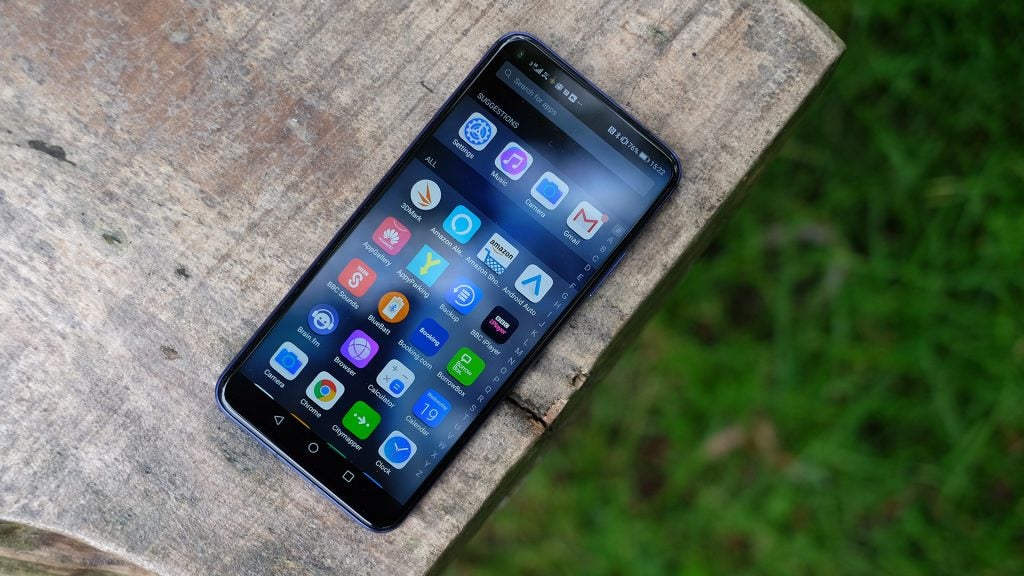
Honor 20 — Performance
The Honor 20 has the Kirin 980 processor. This is used in phones twice the price, like the Huawei P30 Pro.
You get excellent performance for your money here, even if it is now dramatically outperformed by the respective Qualcomm alternative, the Snapdragon 855.
The Kirin 980 has eight cores. Four are Cortex-A76 performance cores, the other four lower-powered Cortex-A55 ones. And there’s 6GB RAM. That’s 2GB less than the Honor 20 Pro, but I used that phone for a few weeks before the Honor 20 arrived, and have not noticed any obvious performance difference.
A relatively high-end CPU lets you turn on more graphical effects in games. PUBG runs happily at the top graphics setting. You can’t do that with a Pixel 3a XL.
In Geekbench 4 the Honor 20 scores 9674 points (3263 per score), which is fantatsic at the price. It’s flagship-style performance.
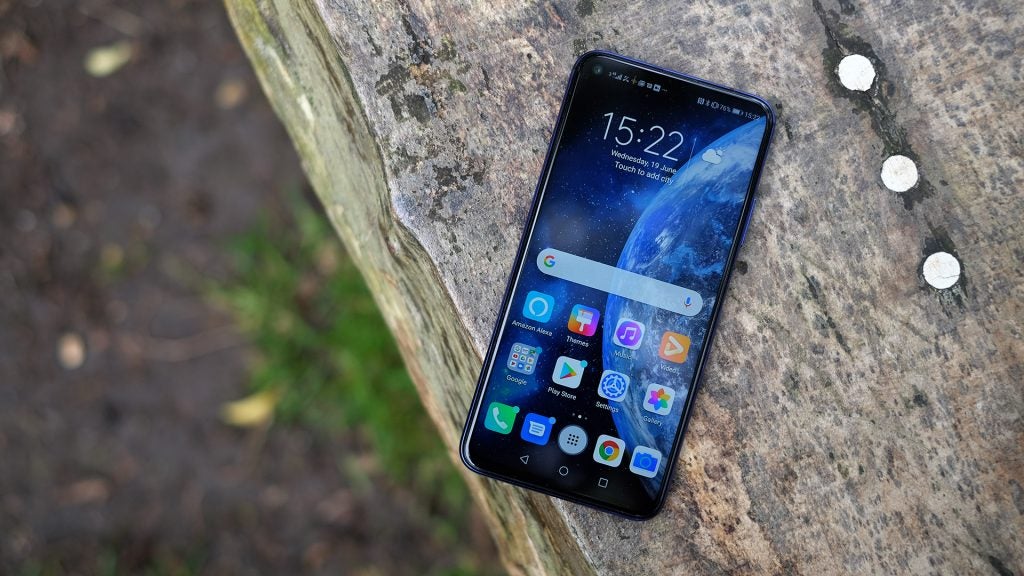
Honor 20 — Camera
The Honor 20 has a selection box of rear cameras. There are four of them, the same number as the Honor 20 Pro. Their jobs are different, though.
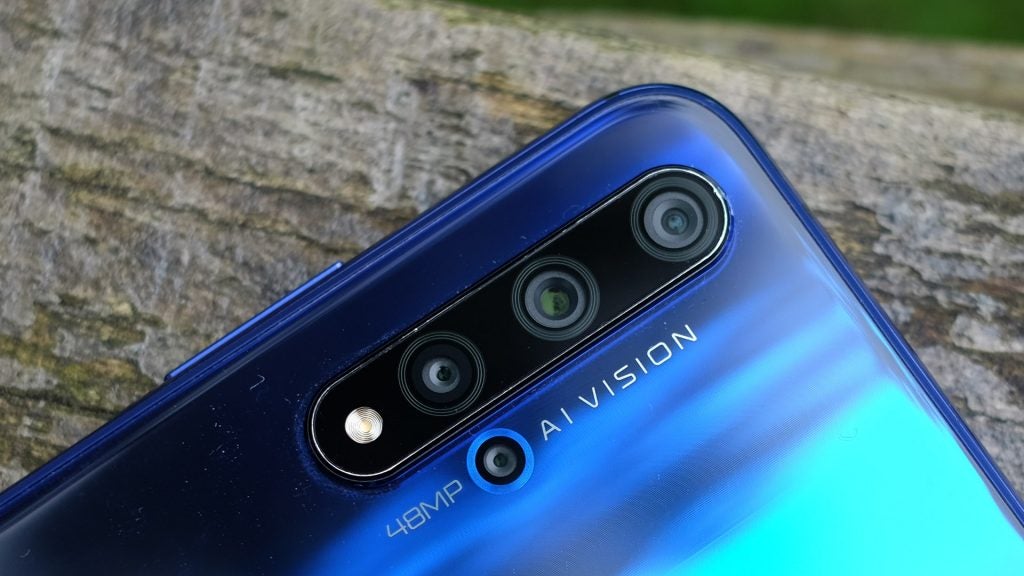
You get a main 48-megapixel sensor and a “0.6x” ultra-wide. But there’s no true zoom lens here. Any shots taken with the 2x zoom mode in the camera app are tweaked crops of the main camera’s view.
A true zoom is perhaps the main benefit of the most expensive Honor 20 Pro. I took the Honor 20 to a 3-day music festival and used it for shooting throughout. It’s not that hot at bringing out the on-stage performers when there are several hundred people in front of you.

Similarly, the third and fourth cameras aren’t impressive either. One is a 2-megapixel macro. To use it you have to dig out a special mode half-hidden in the camera app.
You then need to get the subject at around 4cm distance to make it sharp (as the lens has a fixed focus). And even then the sensor is just too low-res to capture any genuinely good macro images.

The last camera is a basic depth sensor, used in the Portrait and Aperture modes to help blur out the background. I’m a fan of Huawei/Honor’s Aperture mode, but this take on it often leaves you with slightly flawed object outlines.
You may get four rear cameras, but only two of them are particularly interesting. There’s still a lot to like here, though.
Most photos taken with the Honor 20 look lovely. They’re detailed, dynamic range is very good, shooting feels responsive and the fast f/1.8 lens of the main camera creates a nice natural bokeh effect for close-ups before you even touch the Aperture and Portrait modes.
The Honor 20 also has the dedicated night mode seen in the top Huawei phones. This takes several seconds to capture an image, but radically increases the dynamic range and clarity of many night scenes.
It’s not nearly as effective as the spookily good Night mode of the Huawei P30 Pro. Dark areas are often a bit noisy, and very, very dark scenes don’t turn out remotely as well. But it still proved extremely useful in balancing out the muddy, muggy foreground and bright stage-lit background in some of my music festival shots.

I did notice that a few of my standard night shots were slightly blurry. Alcohol wasn’t entirely to blame, as the Honor 20 camera does not have optical stabilisation, which acts as an insurance policy against handshake blur.
The Honor 20 is a satisfying camera to shoot with. Most of its images look good, the ultra-wide gives you another framing option and its photos are solid enough too. I did miss the lack of a “real” zoom. And, as in the Honor 20 Pro, I wasn’t at all impressed by the dedicated macro camera.
Here are some more sample images:




The Aperture mode may have a dedicated camera to help it, but that doesn’t make it immune to wibbles, seen here

The lens is slightly susceptible to lens flare, as seen here

The AI shooting mode has oversaturated colours here, but it certainly looks lively

Its video side is great. I ended up shooting some interviews with the phone at the festival for a side project. The Honor 20 shoots detail-packed 4K footage with dynamic range to shame some dedicated cameras. It’s software-stabilised at 4K too, which is essential if you want pro-looking handheld footage. 4K is captured at 30fps rather than 60, but I’m more than happy with the results.
While I plugged in a Rode mic for the interviews, I also shot some footage of a few bands with the internal mic. It didn’t distort horribly even with an ultra-high sound level, suggesting the phone uses a good MEMs mic that can handle very loud environments.
The Honor 20’s selfie camera is sound too. It has a very high-res 32-megapixel sensor, preumably using pixel binning when the light level drops. You only get more detail than a good 8-megapixel selfie camera in perfect lighting, and worse detail than the best in dismal light, but it fares pretty well across all light levels.
Honor 20 — Battery life
The Honor 20 has a 3750mAh battery, a little smaller than the 4000mAh of the Honor 20 Pro, but it still provides the battery confidence I’ve come to love in Huawei and Honor phones.
It’s never failed to last a full day with a good amount of battery left over. This is the kind of phone you can take to a festival, just like I did, and expect it to last the whole duration if you bring an external battery with enough juice for a full recharge.
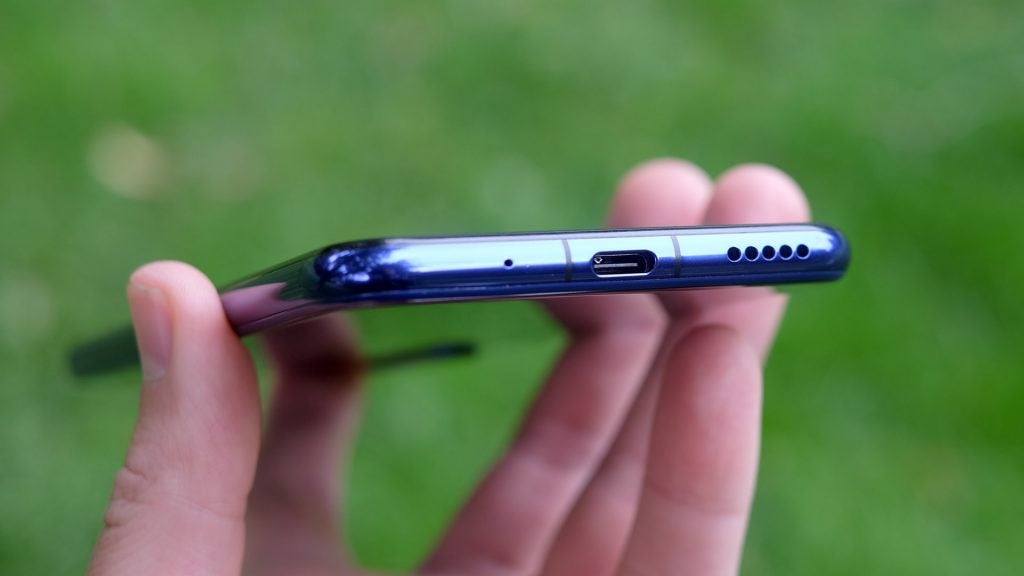
For some more specific context, it’s 5:27pm. The phone has 66% battery left. It started its day at 7:45am, has played around six hours of podcasts and one quick round of PUBG.
Fast forward to 8:30pm. It now has 55% left, after being subjected to, you guessed it, some more podcast streaming.
Fast forward to 12:25am. I’ve fallen down an eBay wormhole and should be asleep by now. But despite browsing through listings for an inadvisable amount of time, the Honor 20 still has 44% left.
The phone eventually needed a recharge at 12:21pm the following afternoon.
The Honor 20 also has fast charging, using the 22.5W SuperCharge standard. This gets you from 0 to 50% in around half an hour. Testing with the phone switched on and connected to Wi-Fi, though, it only actually got to 44% in 30 minutes.
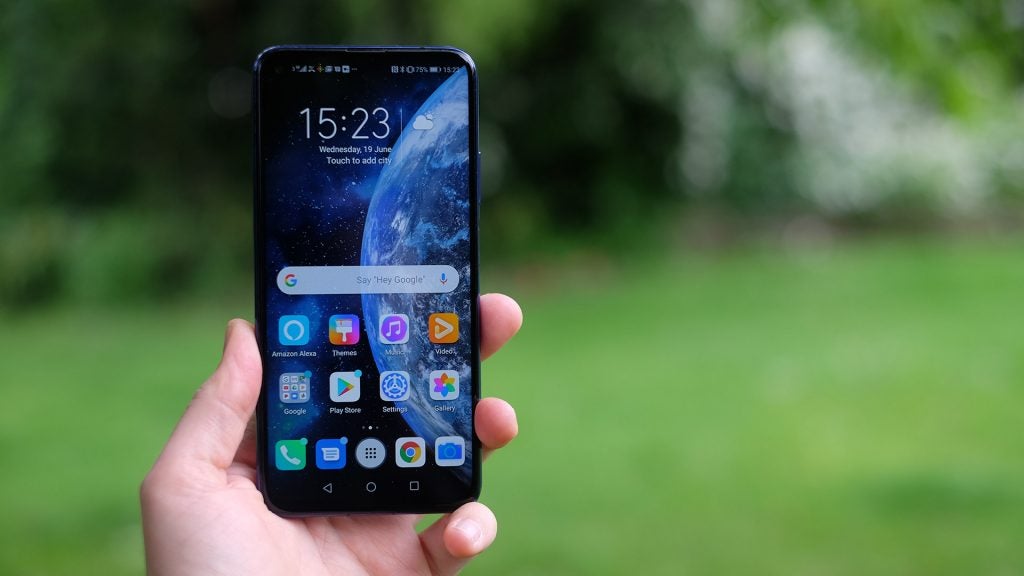
Should I buy the Honor 20?
You probably shouldn’t buy the Honor 20 right now. It looks and feels great. It’s powerful. And while the camera array may seem better on paper than it is in person, it’s still great.
If it were not for the “political” situation Huawei and Honor are currently in, the Honor 20 would be easy to recommend. It’s great value and a highly likeable phone, as long as you are not someone who insists the custom software from Honor and Huawei is still terrible.
Until we have a clearer view of whether the phone will get some level of basic support from Google in a year’s time, we can’t recommend it with a clear conscience.
Verdict
A great mid-range phone you probably shouldn’t buy, yet


